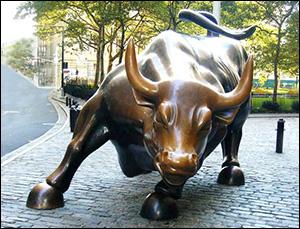Courtesy of Pam Martens.
 The conventional wisdom is that the crash on Wall Street that continues to devastate the U.S. economy and job growth began in earnest in 2008. That’s likely because marquee Wall Street firms, in business for 75 to more than 100 years, did not blow up until 2008. Bear Stearns imploded in March of 2008 and was taken over by JPMorgan. On the same day, September 15, 2008, that Lehman Brothers filed bankruptcy, Merrill Lynch was taken over by Bank of America. Other major Wall Street firms were propped up with the largest taxpayer bailout in the history of U.S. financial markets.
The conventional wisdom is that the crash on Wall Street that continues to devastate the U.S. economy and job growth began in earnest in 2008. That’s likely because marquee Wall Street firms, in business for 75 to more than 100 years, did not blow up until 2008. Bear Stearns imploded in March of 2008 and was taken over by JPMorgan. On the same day, September 15, 2008, that Lehman Brothers filed bankruptcy, Merrill Lynch was taken over by Bank of America. Other major Wall Street firms were propped up with the largest taxpayer bailout in the history of U.S. financial markets.
A careful review of the report from the Financial Crisis Inquiry Commission (FCIC), Federal Reserve documents, Fed appointment calendars, and news archives indicate clearly that the financial system began “unraveling,” (as the FCIC phrased it) in 2007. More importantly, a number of events in 2007 had the clear, indisputable earmark of a financial panic but were glossed over by the Federal Reserve, which did not begin to cut interest rates until the third quarter of the year, and then only after serious market convulsions in the U.S. and Europe.
At its January, March, May, June and August meetings of the Federal Open Market Committee (FOMC), the Fed repeated the same words: “The Federal Open Market Committee decided today to keep its target for the federal funds rate at 5-1/4 percent.”
The only possible explanation for the Fed’s resistance to cutting interest rates sooner is that it was in the dark about how Wall Street had tied a noose around its neck, anchored it to the U.S. housing market, then infused that risk into the overall economy through hybrid securities and derivatives sold here and around the globe.
The warning signs began as early as January 2007 when Mortgage Lenders Network said it was ceasing to fund mortgages or accept applications. In February, HSBC, one of the largest subprime lenders in the U.S. at the time, announced a $1.8 billion increase in its provision for potential losses. In March, New Century, which ran a close second to HSBC in subprime loans, said in an SEC filing that federal investigators were “conducting a criminal inquiry under the federal securities laws in connection with trading in the company’s securities, as well as accounting errors regarding the company’s allowance for repurchase losses.” In April, New Century filed bankruptcy.
Against this backdrop, Congress heard the following from Fed Chairman Ben Bernanke and U.S. Treasury Secretary Hank Paulson in March 2007. “The impact on the broader economy and financial markets of the problems in the subprime market seems likely to be contained,” Bernanke told the Joint Economic Committee of Congress. Paulson testified to a House Appropriations subcommittee: “From the standpoint of the overall economy, my bottom line is we’re watching it closely but it appears to be contained.”
…



